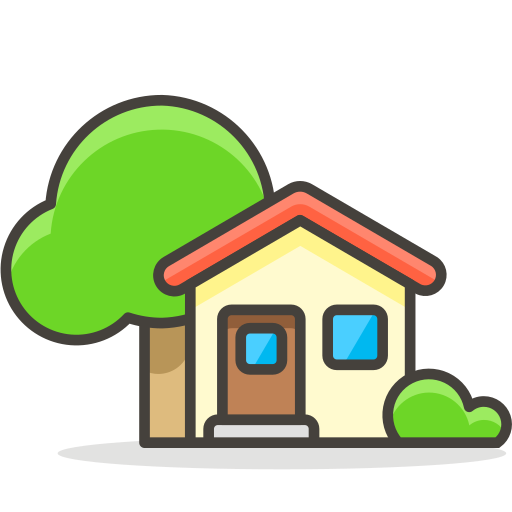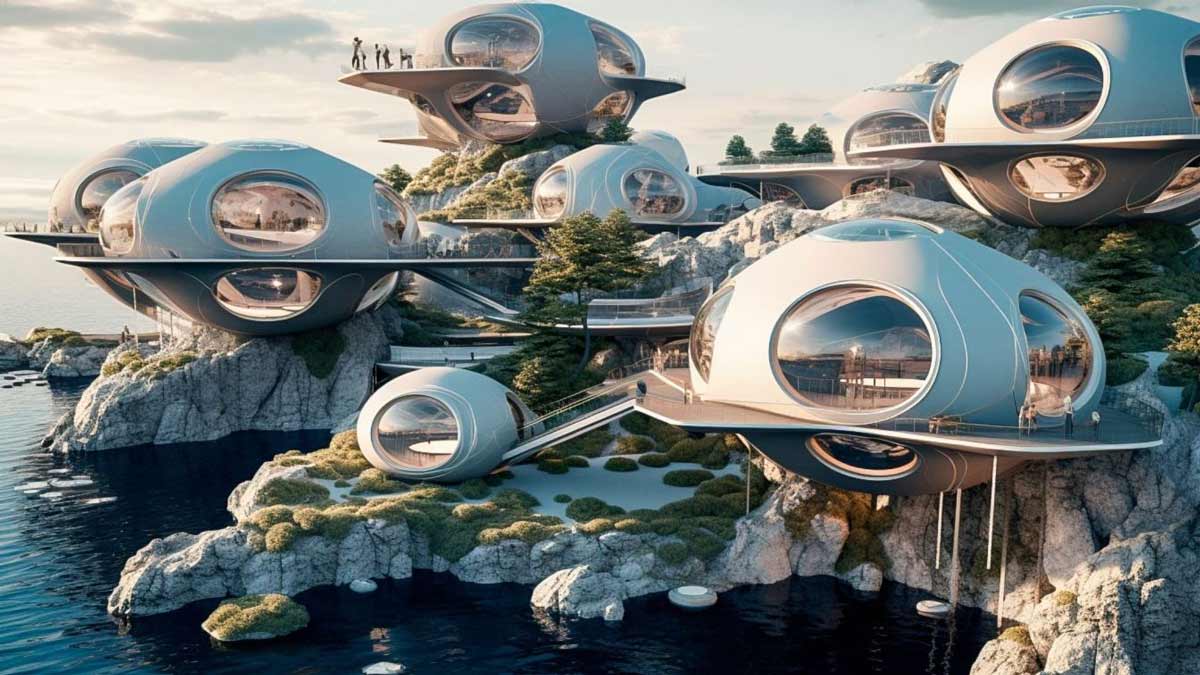The Rise of Smart Living
The Emotional Shift: More Than Just a “Smart” Home
Imagine waking up to a home that knows you. The blinds lift gently as sunlight begins to rise. Your coffee starts brewing without a button pushed. The thermostat adjusts the temperature before your feet touch the floor. This isn’t science fiction. This is 2025. And it’s all thanks to the Internet of Things — or IoT.
In recent years, technology has quietly moved from screens into the fabric of our homes. It’s no longer about gadgets—it’s about a lifestyle. A smarter, more responsive, more efficient way of living. From voice-activated lights to refrigerators that track grocery levels, IoT is revolutionizing modern home life. And the transformation is just beginning.
What Exactly Is IoT?
The Internet of Things refers to the network of physical objects—“things”—embedded with sensors, software, and other technologies to connect and exchange data with other devices and systems over the internet.
In the context of your home, these “things” are everything from smart speakers and lights to thermostats, cameras, vacuums, and even toilets. These devices can be controlled remotely and, in many cases, can learn your habits and automate routines to enhance your lifestyle without effort.
A Quick History: From Wired to Wireless, From Manual to Magical
Smart homes have been a dream since the 1960s. But it wasn’t until the past decade that technology caught up with imagination. The rise of smartphones, voice assistants (like Alexa and Google Home), and cheap sensors unlocked a new era. By 2020, the market for smart home devices had already crossed $100 billion globally. In 2025, it’s projected to exceed $210 billion.
The shift from isolated gadgets to interconnected smart ecosystems has been the game-changer. Your doorbell talks to your phone. Your smart blinds sync with your sunrise alarm. Your kitchen scale suggests recipes based on what’s in your fridge. Welcome to the mesh of modern living.
The Core Benefits of IoT in Everyday Home Life
IoT’s influence isn’t just about convenience. It reshapes how we experience our homes on multiple levels:
-
Convenience: Control your home from anywhere. Forgot to turn off the lights? Do it from your phone.
-
Energy Efficiency: Smart thermostats save up to 23% on heating and cooling. Lights shut off when no one’s around.
-
Safety & Security: Smart locks, doorbell cams, motion sensors, and leak detectors add layers of protection.
-
Customization: Devices adapt to your habits, mood, and lifestyle preferences.
-
Accessibility: Elderly and disabled residents gain more independence via voice commands and automation.
-
Cost-Saving: Less wasted energy, more efficient appliances, and time saved = serious ROI.
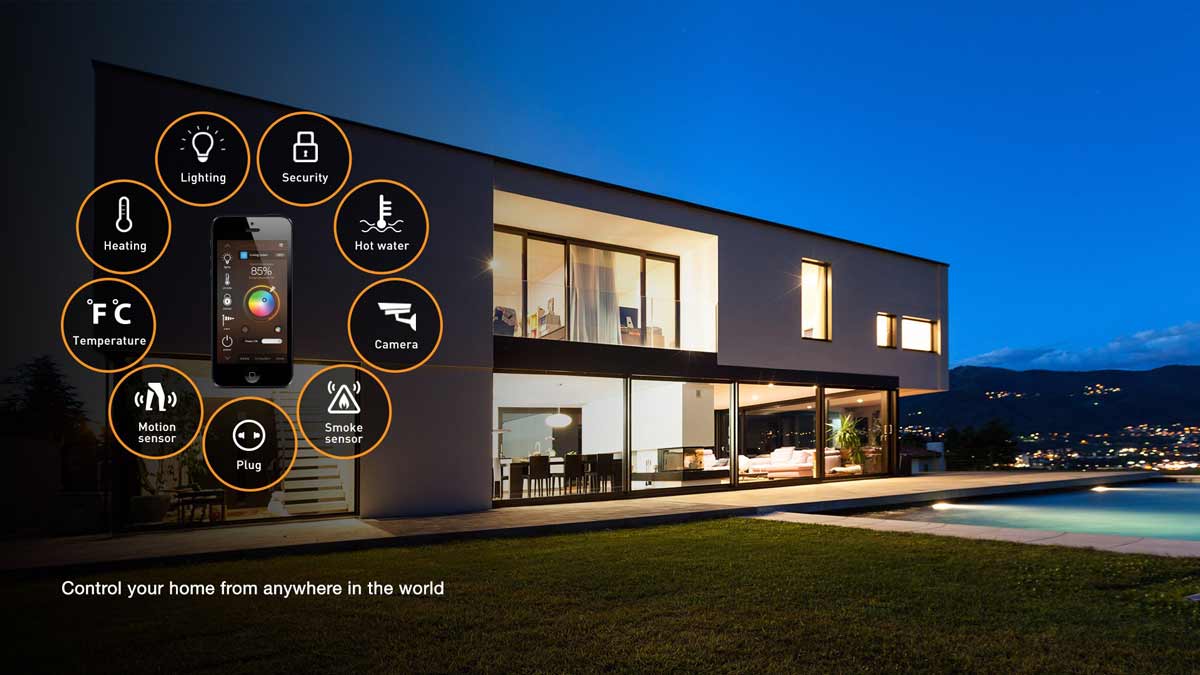
futurehomeshi_smart homes with IOT
IoT Touchpoints in the Modern Home
IoT now touches nearly every part of domestic life. Here’s how different parts of the house are getting smarter:
-
Lighting: Smart bulbs adjust brightness, color, and schedules via phone or voice.
-
Heating/Cooling: Smart thermostats like Nest learn your daily habits and automate energy use.
-
Appliances: Ovens that preheat before you get home. Refrigerators that reorder milk.
-
Entertainment: Smart TVs, sound systems, and VR gaming rooms connected in one dashboard.
-
Security: Cameras, doorbells, motion sensors, smart locks — all synced to your smartphone.
-
Cleaning: Robotic vacuums that clean while you sleep.
-
Water Management: Leak sensors and smart irrigation systems save water and prevent damage.
-
Laundry: Washers that start cycles remotely and notify you when done.
-
Bathrooms: Smart mirrors, toilets with health sensors, and digital showers.
These are no longer luxury options — they’re fast becoming standard in new homes and renovations alike.
How IoT Devices Are Seamlessly Integrating with Daily Routines
Here’s what a typical day in a smart home might look like in 2025:
-
6:30 AM: Wake-up lights mimic sunrise. Thermostat warms the bedroom. Coffee brews.
-
7:00 AM: Mirror displays the weather, traffic, and calendar. Toilet monitors hydration and sends wellness data.
-
8:00 AM: You leave. Doors lock automatically. Security system arms. HVAC goes to eco mode.
-
12:00 PM: Groceries are delivered and stored in a smart fridge that tracks expiry dates.
-
6:00 PM: House preps for your arrival — lights on, music playing, dinner recommendations ready.
-
10:00 PM: Curtains close. Doors check themselves. Bedroom lights dim. Your home gently puts itself to sleep.
This isn’t luxury anymore. It’s a logical evolution of home life powered by technology that understands you.
Table 1: Traditional Home vs. Smart Home in 2025
| Feature | Traditional Home | Smart Home (2025) |
|---|---|---|
| Lighting Control | Manual switches | App-controlled, voice-enabled, automated |
| Thermostat | Manual, fixed settings | Adaptive, learning, remote-access |
| Security | Basic locks, maybe alarm | Smart locks, cameras, motion + AI detection |
| Energy Management | No monitoring | Usage tracking, real-time optimization |
| Entertainment | Separate devices | Integrated systems with voice/gesture control |
| Appliance Control | Manual | Remote-controlled, self-learning |
| Laundry | Manual start/stop | Notifications, load-sensing, app integration |
| Water Management | No leak detection | Leak sensors, auto shut-off, irrigation apps |
| User Adaptability | Static | Personalized based on behavior & preferences |
| Health Monitoring | None | Toilets, mirrors, wearables integrated |
Real-World Examples: IoT in Action
-
Samsung SmartThings Ecosystem: Syncs appliances, sensors, and cameras into one user-friendly app.
-
Google Nest: Controls temperature, smoke detection, cameras, and doorbells — all optimized by AI.
-
Amazon Alexa: Manages lights, locks, schedules, and shopping via voice.
-
Ecobee Thermostats: Uses room sensors to heat or cool based on presence and comfort.
-
iRobot Roomba: Cleans based on your schedule and can map your entire floorplan.
These companies aren’t just selling products. They’re offering new ways to live.
Welcome to the Era of Living with Intelligence
The dream of a fully automated, responsive, and intuitive home is no longer science fiction. It’s affordable, accessible, and becoming the new standard of comfort and care. IoT is not just changing devices — it’s changing behavior, expectations, and how we connect with the spaces we call home.
In Part 2, we’ll break down the top categories of smart devices and explain how they work, which ones to choose, and how they interact as a complete system.
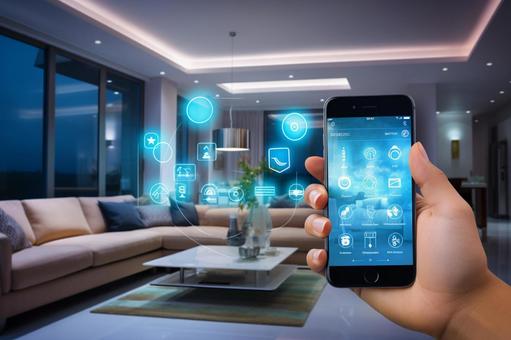
How IoT Devices Work Together: Home Hubs, Networks, and Compatibility
Building a Smarter Life: The Ultimate Guide to IoT Devices for Your Home
Deep Dive Into Smart Home Devices
The New Power Grid of Home Intelligence
In the smart home of 2025, individual devices are no longer operating in silos. They form a network — a connected, responsive, and often predictive ecosystem. From voice assistants to robotic cleaners, every tool is an extension of your lifestyle, reacting not just to commands but to behaviors, preferences, and even emotions.
This section explores the primary types of IoT devices that define today’s smart home — their functionality, benefits, and how they work in harmony to elevate daily living.
Smart Lighting Systems: Brightness Meets Brilliance
Lighting is no longer about flipping a switch. It’s about creating mood, syncing with schedules, and saving energy.
-
Key Players: Philips Hue, LIFX, Wyze Bulbs, Nanoleaf
-
Features: App or voice control, color temperature adjustment, motion activation, geo-fencing
-
Benefits: Energy savings, ambiance control, automation of routines
-
Use Case: Lights gradually brighten in the morning and dim automatically in the evening, mimicking natural light cycles to improve sleep and mood.
Backlink: Read about how light color impacts mental health on Healthline
Smart Thermostats: Precision Climate, Lower Bills
Heating and cooling used to be passive. In 2025, smart thermostats actively learn your preferences, schedule, and energy habits.
-
Key Players: Google Nest, Ecobee, Honeywell Home
-
Features: Adaptive learning, remote control, room-specific zoning
-
Benefits: Up to 23% energy cost savings annually
-
Use Case: The thermostat lowers temperature automatically when the house is empty and raises it just before residents return.
Backlink: Energy Star: Smart thermostats explained
Smart Security: Peace of Mind, in Real Time
Security has seen one of the most dramatic evolutions through IoT. Today’s systems are proactive, intelligent, and mobile-friendly.
-
Devices: Smart doorbells (Ring, Nest Hello), motion sensors, AI cameras, smart locks
-
Features: Real-time alerts, facial recognition, remote lock/unlock, 2-way communication
-
Use Case: A delivery person approaches the door, and you speak to them via your phone, unlock the smart garage door remotely, and re-lock it once the package is inside.
Backlink: Wired’s guide to smart home security in 2025
Smart Kitchens: Cooking with Intelligence
From appliances that assist you in cooking to fridges that help manage your diet, the smart kitchen is the command center of modern wellness.
-
Devices: Smart fridges, ovens, coffee machines, faucets, scales
-
Key Features: Ingredient tracking, automated timers, temperature precision, voice commands
-
Use Case: A fridge tracks the expiration of milk, recommends recipes based on what’s inside, and suggests a grocery list.
Backlink: Forbes: How IoT is reinventing kitchen appliances

What’s Next? Future Trends in Home IoT Technology (2025–2030)
Eco-Friendly Smart Homes: How IoT Helps Save the Planet
Smart Entertainment: Immersion at a Command
Entertainment systems are no longer isolated setups. They’re immersive experiences, connected and voice-enabled.
-
Devices: Smart TVs (LG, Samsung, Roku), streaming hubs, sound systems, VR headsets
-
Features: Voice command, cross-device syncing, customizable sound profiles
-
Use Case: Say “Movie night,” and your TV dims the lights, lowers the blinds, turns on the soundbar, and launches Netflix.
Voice Assistants & Smart Hubs: The Brains of the Home
These AI-powered companions are the connective tissue of your smart home.
-
Popular Assistants: Amazon Alexa, Google Assistant, Apple Siri
-
Capabilities: Device control, reminders, schedule management, information search, shopping
-
Use Case: You say, “I’m cold,” and Alexa increases the room temperature while switching on the cozy lighting scene.
Important Stat: Over 72% of smart homes in the U.S. rely on voice assistants as the central interface (Statista, 2025).
Smart Bathrooms: High-Tech Hygiene and Wellness
Bathrooms have quietly become tech-forward spaces with innovations in comfort, health monitoring, and water conservation.
-
Devices: Smart toilets (TOTO, Kohler), digital showers, health-monitoring mirrors
-
Features: Automatic lid opening, bidet functions, health diagnostics, water usage control
-
Use Case: A mirror that analyzes your skin or hydration levels and suggests skincare or hydration routines.
Smart Bedrooms: Optimized for Rest and Recovery
Your bedroom is no longer just for sleep — it’s a data-informed wellness hub.
-
Devices: Sleep-tracking beds, circadian rhythm lights, temperature-regulating mattresses
-
Features: Sleep cycle monitoring, mood lighting, adaptive climate control
-
Use Case: Your smart mattress tracks REM patterns and syncs with the thermostat to lower temperature at peak sleep stages.
Smart Laundry Rooms: Automation in Action
Laundry rooms are also becoming efficient tech zones.
-
Devices: Smart washers & dryers (LG, Samsung), folding machines
-
Features: Remote start/stop, load sensing, cycle optimization, app notifications
-
Use Case: You receive a ping that the wash is done while on a video call — and the dryer starts automatically.
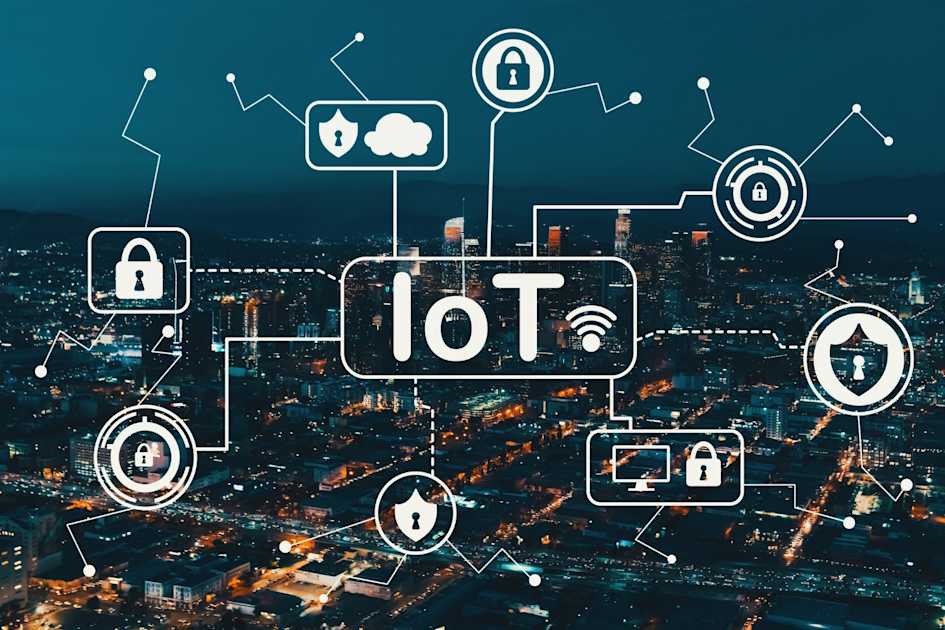
What_is_IoT
Table 2: Top 10 Smart Home Devices in 2025 (Ranked by Popularity & Utility)
| Rank | Device | Brand Examples | Core Benefit |
|---|---|---|---|
| 1 | Smart Thermostat | Nest, Ecobee | Energy saving, auto climate |
| 2 | Smart Bulbs | Philips Hue, LIFX | Lighting control & ambiance |
| 3 | Voice Assistant | Alexa, Google Assistant | Central control, convenience |
| 4 | Smart Locks | August, Yale | Keyless entry, remote security |
| 5 | Smart Doorbells & Cameras | Ring, Arlo | Security alerts, video verification |
| 6 | Smart TVs | LG, Roku, Samsung | Unified streaming, voice search |
| 7 | Smart Fridges | Samsung Family Hub | Food management, shopping aid |
| 8 | Smart Plugs & Outlets | TP-Link, Kasa | Device automation, remote access |
| 9 | Robotic Vacuums | iRobot Roomba, Eufy | Hands-free cleaning |
| 10 | Smart Showers | Kohler, Moen | Water saving, personalized showers |
The Power of Interconnectivity: Why Devices Work Better Together
What makes these devices more than just tools is their ability to communicate with each other. Here’s how synergy plays out:
-
Routine Automation: One command triggers a chain of responses — “Goodnight” shuts lights, locks doors, and lowers the thermostat.
-
Cross-Platform Sync: Apps like Google Home and Apple HomeKit allow users to control everything from one place, even across brands.
-
Learning Algorithms: Devices learn from one another. Your thermostat adjusts based on your lighting habits. Your fridge knows when you eat.
This is no longer about having a smart home. It’s about having a thinking home.
Coming Up Next: The Future of Smart Homes
As IoT spreads, we must ask deeper questions. What happens to our privacy? What about elderly care, child safety, or eco-conscious living? These are the themes we’ll explore.
Get ready for the next phase — one that looks ahead, asks the tough questions, and reveals how to prepare for the smarter future.
How IoT Devices Are Transforming Modern Home Life in 2025
(Part 3: The Future, the Challenges, the Mastery)
The Evolution of Smart Homes: What’s Next?
By 2025, smart homes are no longer futuristic fantasies — they’re living realities. But the story doesn’t end at voice commands or remote controls. The trajectory is shifting from automation to autonomy — homes that predict, adapt, and evolve based on who we are and what we need.
Let’s explore where this wave is heading.
AI-Driven Homes: Learning, Thinking, Deciding
The integration of Artificial Intelligence into IoT has ushered in homes that are not just responsive, but proactive. Devices are now deeply contextual.
-
Predictive Routines: Your home knows when you’re usually cold, tired, or stressed — and adjusts lights, scents, music, and temperature accordingly.
-
Health Insights: Smart bathrooms and wearables combine data to warn of dehydration, stress levels, or even irregular heartbeats.
-
Autonomous Appliances: Dishwashers start on their own when sensors detect usage; air purifiers kick on based on AQI data from the outside.
Backlink: Harvard Review – The Rise of AI in Smart Homes
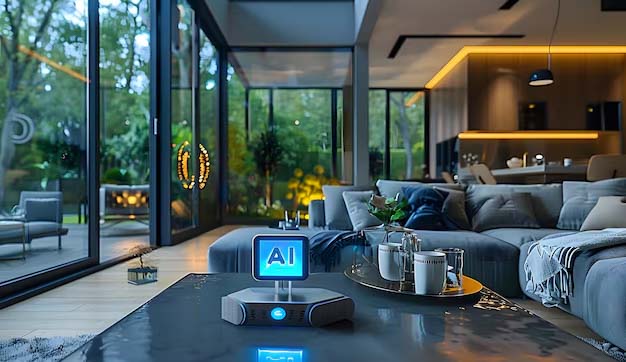
smart-homes-smart-home-smart-home-devices-smart-home-technology-modern-luxury-interior-modern-house
Sustainability: Eco-Smart Homes for a Greener Planet
IoT is increasingly the backbone of sustainable living:
-
Smart Irrigation Systems adjust watering schedules using live weather data.
-
Solar panel systems with IoT monitoring adjust energy usage patterns for peak efficiency.
-
Smart plugs cut standby energy drain, saving up to 10% annually.
Stat Insight: Smart homes reduce carbon footprint by up to 28% (World Economic Forum, 2025).
Privacy and Security in the Age of Data Homes
With increased intelligence comes the increased risk of surveillance, hacking, and data misuse.
-
Problem: Devices collect vast behavioral data — eating habits, sleeping patterns, financials.
-
Solution: Devices with end-to-end encryption, multi-factor authentication, and edge computing (processing data locally) are becoming standard.
Backlink: Consumer Reports – Are Smart Homes Spying on You?
The Role of IoT in Family Wellness and Care
IoT doesn’t just make homes smarter; it makes people safer and healthier, especially for:
-
Elderly monitoring: Fall detection systems and medication reminders.
-
Child safety: Smart baby monitors, motion sensors near staircases.
-
Pet tracking: Smart collars alert owners if a pet escapes or shows distress.
These systems are becoming less intrusive and more emotionally aware — detecting not just danger, but emotional states based on tone, posture, or behavioral patterns.
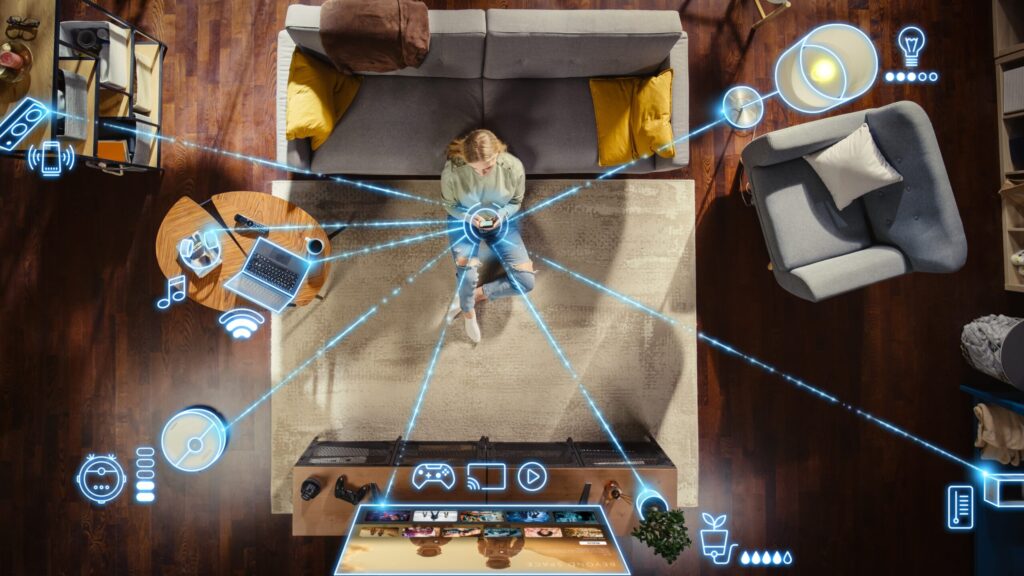
Top,View,Of,Caucasian,Woman,In,The,Loft,Apartment,Sitting
Easy Smart Home Setup
How to Prepare Your Home for the Future of IoT
The homes of tomorrow require infrastructure and mindset readiness today. Here’s your 2025 roadmap:
| Step | Action | Why It Matters |
|---|---|---|
| 1 | Upgrade to a Mesh Wi-Fi Network | Seamless connectivity for dozens of devices |
| 2 | Invest in an AI-enabled Home Hub | Future-proofed control and coordination |
| 3 | Check Device Compatibility | Ensures cross-platform interoperability (e.g., Matter) |
| 4 | Secure Your Network | Use WPA3, VPNs, and firewalls to protect your data |
| 5 | Stay Informed | Tech evolves monthly — be ready to adapt and upgrade |
FAQ – Smart Homes & IoT in 2025
What is the biggest benefit of smart homes today?
Answer: Time and energy savings. IoT automates daily tasks while optimizing comfort and cost-efficiency.
Why are IoT homes considered safer?
Answer: They use real-time alerts, remote monitoring, and predictive threat detection to prevent theft or accidents.
Who is leading the IoT smart home industry in 2025?
Answer: Amazon (Alexa ecosystem), Google (Nest), Apple (HomeKit), and Samsung (SmartThings) are dominant players.
Where is the biggest growth in smart home devices?
Answer: In energy management, health-focused tech, and AI-powered systems.
When will most homes become fully smart?
Answer: Experts estimate 70%+ of U.S. households will be at least semi-smart by 2027.
How do I choose compatible devices?
Answer: Look for support for Matter, the new universal IoT standard adopted by top brands.
What’s the guide to starting a smart home setup?
Answer: Begin with a smart speaker, add lighting, then expand based on your lifestyle needs.
How is IoT affecting everyday life at home?
Answer: It creates an environment that adapts to our moods, health, security, and schedules.
List of essential smart home categories?
Answer: Lighting, climate control, security, entertainment, kitchen, sleep tech, and health/wellness devices.
Reasons IoT will define the future of living?
Answer: Efficiency, personalization, security, sustainability, and wellness — all driven by real-time data and AI.
Conclusion: You Are the Architect of Tomorrow
IoT isn’t just about tech — it’s about reclaiming time, reducing stress, and shaping a home that truly works for you. In 2025, the smart home is no longer optional. It’s a lifestyle upgrade, a safety net, and a wellness enabler.
Those who understand and adopt it early will shape how the future lives, loves, works, and rests.
🎥 Watch This Now: The Smartest Homes in the World (2025)
👉
💰 Complete Cost Breakdown of Smart Home IoT Devices in 2025
In 2025, building a smart home doesn’t mean emptying your wallet — but it does require strategic planning. Whether you’re upgrading a few rooms or going fully automated, this detailed pricing table breaks down estimated costs across essential categories.
📊 Table 1: Smart Home Device Cost Overview by Category (2025)
| Category | Device Example | Avg. Cost (USD) | Subscription (if any) |
|---|---|---|---|
| Smart Hubs | Amazon Echo, Google Nest Hub | $100 – $250 | Optional (e.g., Alexa+) |
| Smart Lighting | Philips Hue, LIFX, Nanoleaf | $25 – $200 per bulb | None |
| Smart Thermostats | Ecobee, Nest Thermostat | $120 – $300 | Optional cloud access |
| Smart Security Cameras | Arlo, Ring, Blink | $80 – $250 each | $3 – $10/month |
| Smart Door Locks | August, Yale, Schlage Encode | $130 – $300 | Optional |
| Smart Plugs/Switches | TP-Link, Wemo | $20 – $60 each | None |
| Smart Smoke/CO Detectors | Nest Protect | $100 – $160 | None |
| Smart Garage Door Openers | MyQ, Chamberlain | $120 – $250 | None |
| Smart Refrigerators | LG InstaView, Samsung Family Hub | $1,800 – $4,000 | None |
| Smart Ovens | GE Profile, Samsung Flex Duo | $2,000 – $5,500 | None |
| Smart Dishwashers | Bosch 800, Miele | $900 – $2,500 | None |
| Smart Washing Machines | LG ThinQ, Samsung AI Washer | $1,000 – $2,200 | None |
| Smart Bathroom Devices | Smart toilets, mirrors, scales | $150 – $3,000 | None |
| Smart Irrigation Systems | Rachio, Orbit B-hyve | $100 – $300 | None |
| Home AI Assistants | Josh.ai, Alexa Custom AI | $200 – $4,000+ | Optional ($5–$25/mo) |
| Smart Beds & Sleep Tech | Eight Sleep, Sleep Number 360 | $1,500 – $4,000 | Optional sleep analytics |
| Central Home Energy Systems | Tesla Powerwall, SolarEdge | $7,000 – $18,000 | Optional software access |
📊 Table 2: Smart Home Cost Tiers – Minimal to Luxury Setup
| Setup Level | Rooms Covered | Devices Included | Estimated Total Cost (USD) | Monthly Operating Cost |
|---|---|---|---|---|
| Entry-Level | 1–2 rooms | Smart bulbs, speaker, thermostat, 2 plugs | $500 – $1,200 | $0 – $5 |
| Mid-Range | 4–6 rooms | Add door lock, camera, smart kitchen device, smoke detector | $1,500 – $3,500 | $10 – $20 |
| Full Smart Home | Entire house | Hub, lights, locks, thermostat, cameras, appliances, AI assistant, irrigation | $5,000 – $12,000 | $20 – $40 |
| Luxury Setup | Smart mansion | Fully automated everything, sleep tech, energy systems, custom AI, smart toilets | $20,000 – $100,000+ | $50 – $150+ |
💡 Notes for Master Strategists:
-
Matter-compatible devices are often priced slightly higher but offer greater longevity.
-
Bundle kits (e.g., Ring security packs, Nest starter kits) reduce per-device cost by 20–30%.
-
Pro installation for advanced systems (security, climate) may add $500 – $3,000+ to total cost.
-
Monthly fees are not mandatory unless you want cloud storage, AI features, or remote access logs.
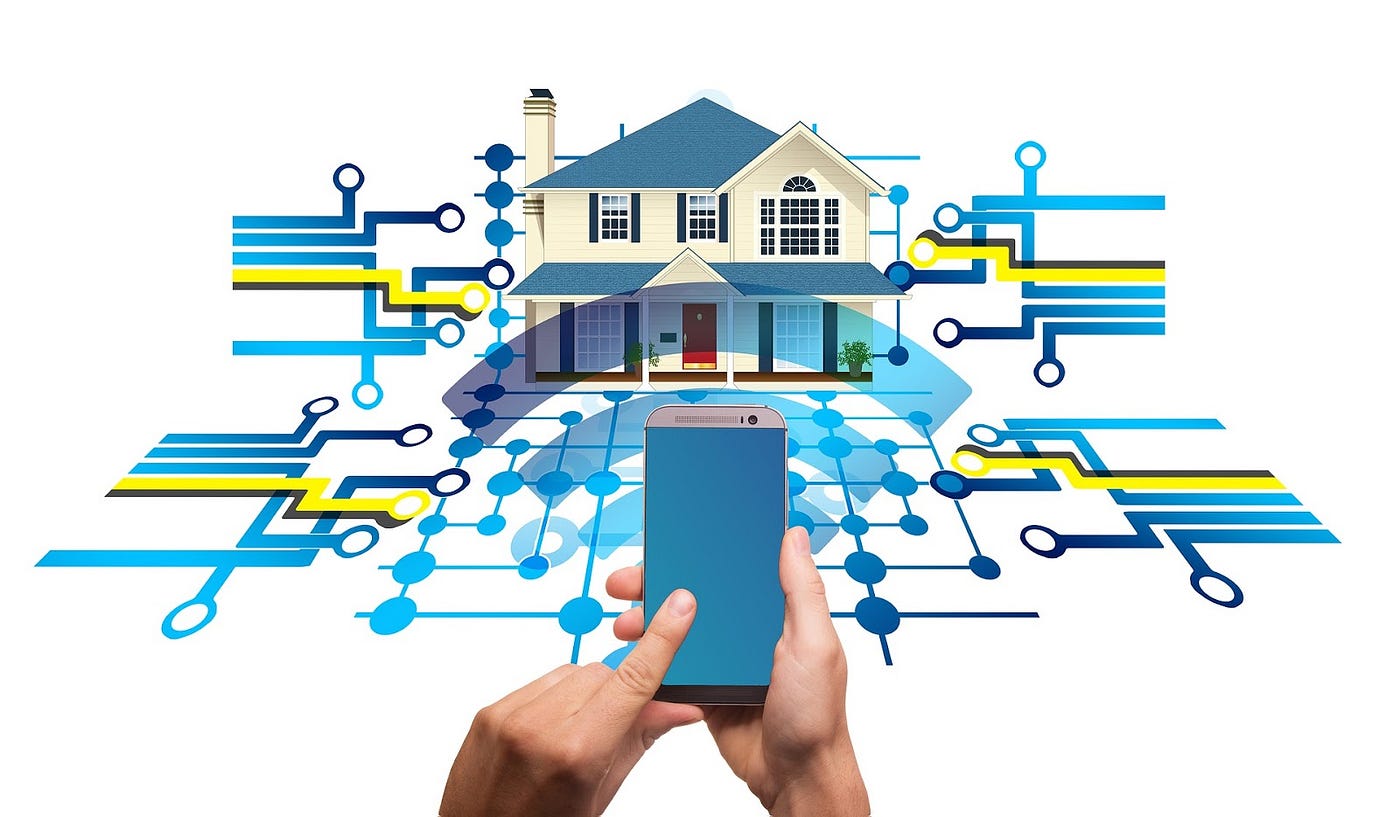
Your Smart Home Ecosystem
💸 Hidden & Secondary Costs of Smart Homes in 2025
📊 Table 3: Installation, Setup, and Custom Integration Costs
| Service Type | Description | Avg. Cost (USD) |
|---|---|---|
| Professional Device Installation | Setup of thermostats, cameras, locks, smart toilets, etc. | $100 – $500 per visit |
| Smart Home Consultant | Personalized planning & device recommendations | $200 – $800 per session |
| Full System Integration (Luxury) | Voice, lighting, security, media & climate — fully unified | $2,000 – $15,000+ |
| Electrician Fees (Wiring Mods) | For hardwired installations (lighting, kitchen appliances) | $100 – $250 per hour |
| Network Upgrade | Upgrading router, mesh WiFi, or Ethernet backbone for full-home coverage | $150 – $800 |
| Cloud & AI Setup Support | Cloud linking, AI routines (Google Home, Alexa, Josh.ai) | $75 – $300 |
| Device Calibration & Customization | Scene setup, sleep tracking, automated routines | $50 – $200 per device |
📊 Table 4: Ongoing Subscription, Cloud, and Maintenance Costs (Annually)
| Service/Device | Service Provided | Avg. Annual Cost (USD) |
|---|---|---|
| Smart Security Cloud Storage | Video recording for 30+ days (Ring, Arlo, Nest) | $30 – $120 per device |
| AI Assistant Premium Tier | Custom AI features, integrations, routines | $60 – $300 |
| Sleep/Health Analytics | Sleep Number, Eight Sleep, Withings | $100 – $200 |
| Smart Energy Monitoring | Real-time reports, solar feedback, Powerwall | $60 – $150 |
| Device Insurance & Protection | Accidental damage coverage | $40 – $100 per device |
| Software License (Some Brands) | e.g., enterprise voice controls, Matter API | $20 – $200 |
| Routine Maintenance Plans | For HVAC, energy, lighting, smart locks | $200 – $600 |
📊 Table 5: Regional Price Variability – Smart Home Setup (2025)
| Region | Entry-Level Setup | Mid-Tier Setup | Full Smart Home | Luxury Full-AI Setup |
|---|---|---|---|---|
| USA (Suburbs) | $800 – $1,200 | $2,000 – $4,000 | $5,000 – $12,000 | $25,000 – $80,000 |
| USA (Metro) | $1,000 – $1,600 | $3,000 – $5,500 | $6,500 – $14,000 | $30,000 – $100,000 |
| Europe (Urban) | €1,200 – €2,000 | €3,000 – €6,000 | €7,000 – €15,000 | €35,000 – €90,000 |
| Middle East (UAE) | $2,000 – $4,000 | $5,000 – $10,000 | $15,000 – $30,000 | $50,000 – $120,000+ |
| Asia (Japan/SG) | $900 – $2,200 | $3,000 – $6,000 | $8,000 – $16,000 | $35,000 – $90,000 |
| India (Urban) | ₹50,000 – ₹1,20,000 | ₹2L – ₹4.5L | ₹5L – ₹10L | ₹15L – ₹40L |
Note: Prices may vary based on local taxes, import duties, service availability, and power infrastructure.
⚠️ Extra Cost Considerations
-
Compatibility Woes: Some brands require exclusive hubs or apps (e.g., Apple HomeKit).
-
Data & Privacy Upgrades: Secure your home network with a smart firewall ($150–$500).
-
Obsolescence Planning: Many devices have a lifespan of 5–7 years before needing upgrades.
🛠️ 2025 Smart Home Maintenance & Upkeep Cost Breakdown
This table outlines the average annual maintenance costs and lifecycle upkeep for various IoT and smart devices across modern homes.
📊 Table 6: Smart Device Maintenance Costs – Annual Estimates (Per Unit or Service)
| Device / System | Maintenance Type | Avg. Cost (USD/Year) | Notes |
|---|---|---|---|
| Smart Thermostat (Nest, Ecobee) | Software updates, recalibration | $30 – $60 | May require pro-service after 3 years |
| Smart Security Camera | Cloud storage, firmware, lens cleaning | $40 – $100 | Higher if 24/7 recording or multiple zones |
| Smart Door Locks | Battery replacement, security patch updates | $20 – $50 | Battery lasts ~6–12 months |
| Smart Lighting System | Connectivity check, firmware, bulb replace | $25 – $75 | Bulbs last ~15,000 hrs (5 years avg.) |
| Smart Fridge / Appliance | IoT diagnostics, filter/part replacement | $70 – $250 | Depends on brand + connected features |
| Smart Blinds / Curtains | Motor calibration, track lubrication | $25 – $80 | Wear & tear common in high-use areas |
| Smart Toilet / Bidet | Nozzle cleaning, water pressure recalibration | $60 – $150 | Filters, hygiene tech maintenance yearly |
| Smart Speakers / Assistants | Software updates, reset, privacy patching | $10 – $30 | Very low, mainly digital maintenance |
| Home Automation Hub (e.g., Hubitat) | Firmware, network protocols, AI config | $15 – $40 | May require re-sync after router upgrade |
| Smart HVAC Systems | Filter change, system diagnostics | $200 – $600 | Smart systems flag maintenance needs |
| Solar + Smart Inverter | Performance monitoring, cleaning, firmware | $150 – $400 | Panels may also need annual inspection |
| Smart Irrigation Controller | Zone calibration, seasonal programming | $40 – $90 | Additional savings if tied to weather-based automation |
| Smart Pool Automation | Sensor upkeep, water level sensors | $120 – $400 | High if heating or PH sensors integrated |
🔁 Table 7: Lifespan & Replacement Cycle Costs (2025 Estimates)
| Device | Expected Lifespan | Typical Replacement Cost (USD) | Maintenance Tip |
|---|---|---|---|
| Smart Door Lock | 4–6 years | $120 – $300 | Replace batteries every 12 months |
| Smart Light Bulb (RGB/White) | 5–7 years | $20 – $60 per bulb | Use dimming features to extend life |
| Smart Thermostat | 6–10 years | $150 – $300 | Factory reset before replacing |
| Smart Hub (Zigbee/Z-Wave) | 5–8 years | $80 – $250 | New protocols may require hub upgrades sooner |
| Smart Speaker / Voice Assistant | 5–6 years | $30 – $200 | Keep firmware current to avoid hardware strain |
| Smart Security Cameras (4K) | 4–5 years | $100 – $350 | Harsh weather exposure lowers lifespan |
| Smart Washer/Dryer | 8–12 years | $800 – $2,000+ | Maintenance alerts from app usually reliable |
| Smart Toilet/Bidet | 8–10 years | $500 – $2,500 | Descaling kits help increase lifespan |
| Smart Fridge | 10–15 years | $1,500 – $5,000+ | Keep airflow behind the unit clean |
🧠 Bonus: AI & Software-Driven Maintenance Savings
| Automation Tool | What It Does | Estimated Savings / Year |
|---|---|---|
| Predictive HVAC Analytics | Avoids mechanical failure, reduces repair costs | $100 – $400 |
| Water Leak Detection Sensors | Prevents water damage through early alerts | $300 – $2,000+ |
| Energy Optimization AI (Sense, Curb) | Reduces energy bills and HVAC strain | $120 – $500 |
| Auto-Firmware Rollout Scheduling | Prevents bricking or security vulnerabilities | Long-term protection |
✅ LEAD MAGNET CHECKLIST
🎯 Top 20 Smart Devices & Their Maintenance Costs in 2025
Title:
🧾 Ultimate 2025 Smart Home Maintenance Checklist: Top 20 Devices & What They Really Cost to Maintain
Format:
Ideal for PDF download, email opt-in, or blog content upgrade.
🔒 SECURITY & ACCESS DEVICES
| Device | Yearly Maintenance Cost | Key Actions |
|---|---|---|
| Smart Door Lock | $20–$50 | Battery change, firmware update |
| Smart Security Camera | $40–$100 | Clean lens, update software |
| Video Doorbell | $30–$60 | Cloud plan + sync check |
| Smart Garage Opener | $25–$70 | App updates, motor check |
🌡️ CLIMATE & ENVIRONMENTAL
| Device | Yearly Maintenance Cost | Key Actions |
|---|---|---|
| Smart Thermostat | $30–$60 | Recalibration, firmware |
| Smart HVAC System | $200–$600 | Filter replacement, diagnostics |
| Smart Humidifier | $15–$40 | Descaling, cartridge replacement |
| Smart Fan / Air Purifier | $30–$90 | HEPA filter change, firmware updates |
💡 LIGHTING & AMBIENCE
| Device | Yearly Maintenance Cost | Key Actions |
|---|---|---|
| Smart Light Bulbs | $25–$75 | Bulb swap, app sync |
| Smart Blinds | $25–$80 | Motor tuning, re-sync |
| Smart LED Panels | $30–$100 | Replace strips, brightness calibration |
🛁 HOME UTILITY & APPLIANCES
| Device | Yearly Maintenance Cost | Key Actions |
|---|---|---|
| Smart Toilet/Bidet | $60–$150 | Nozzle clean, pressure adjust |
| Smart Washer/Dryer | $70–$180 | Drum balancing, app firmware |
| Smart Refrigerator | $70–$250 | Filter change, door seal check |
| Smart Dishwasher | $50–$140 | Jet/nozzle clean, update software |
🧠 AUTOMATION & HUBS
| Device | Yearly Maintenance Cost | Key Actions |
|---|---|---|
| Smart Home Hub | $15–$40 | Protocol sync, firmware |
| Smart Assistant Speaker | $10–$30 | Privacy updates, firmware |
| Smart Irrigation System | $40–$90 | Seasonal reset, zone calibration |
📌 Pro Tip:
Pair this checklist with your IoT Energy Cost Calculator or a Smart Device ROI Estimator for even more engagement!
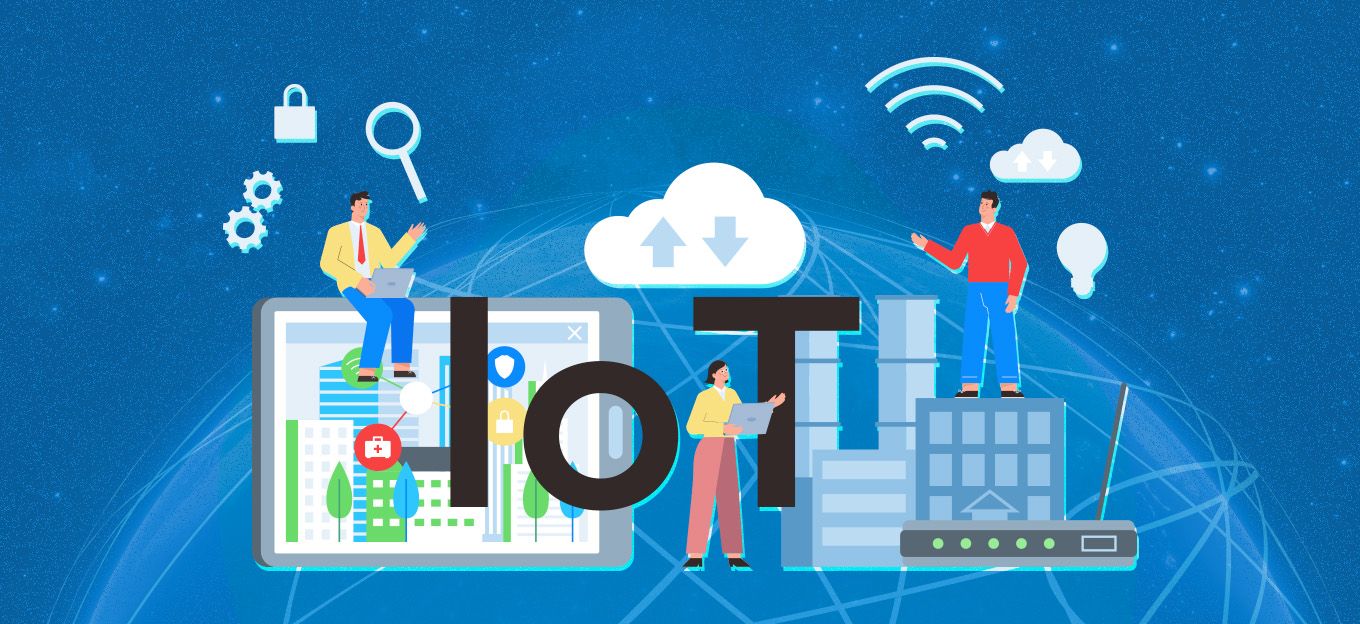
Top 11 Reasons IoT Will Revolutionize Your Daily Life in 2025
